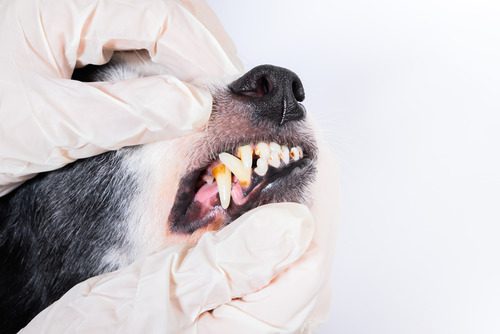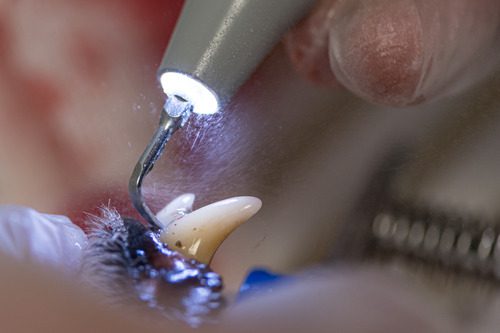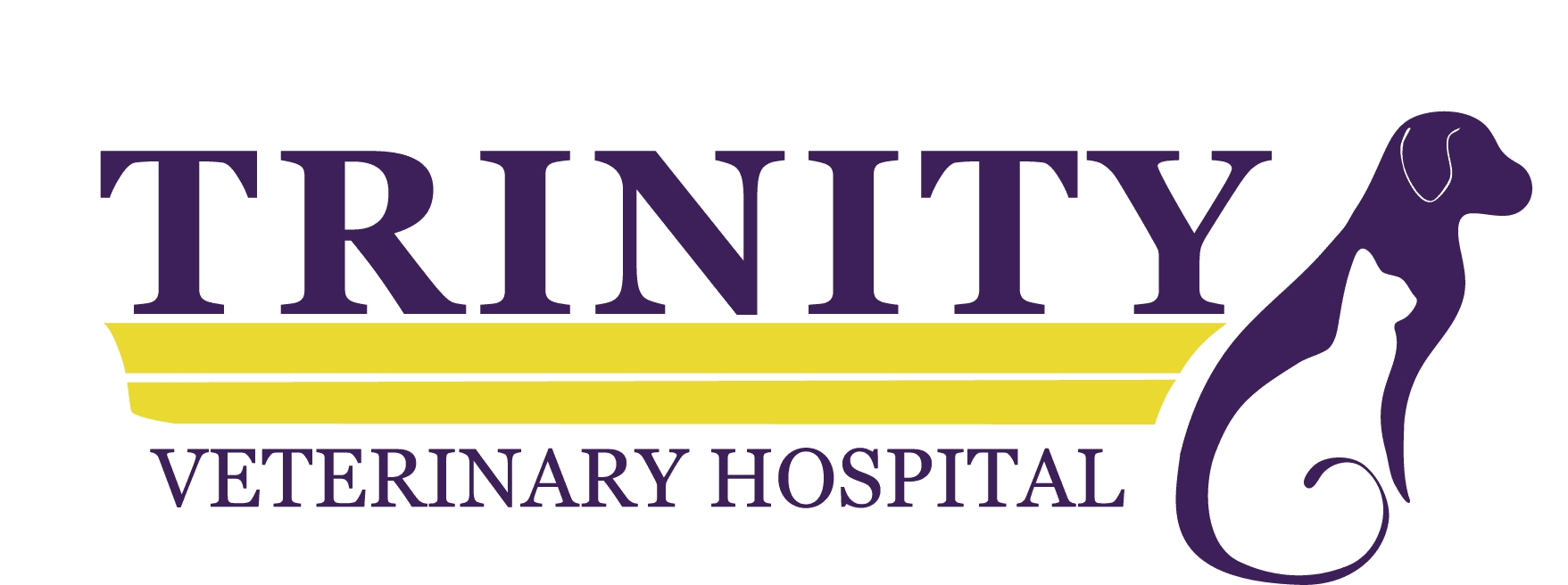Stages of Dental Disease in Dogs

Dental disease in dogs is one of the most common health concerns that pet owners face, yet it often goes unnoticed until it becomes severe. Just like in humans, dogs can develop plaque, tartar, and gum disease over time if their teeth are not properly cared for. Left untreated, dental disease can lead to serious infections, tooth loss, and even affect major organs like the heart and kidneys. At Trinity Veterinary Hospital in Stillwater, OK, we are committed to providing comprehensive dental care to keep your pet’s mouth healthy. If you notice any symptoms of dental disease in your dog, call us at (405) 533-0001 or book an appointment online.
Stage 1: Gingivitis – The First Warning Sign
The earliest stage of dental disease in dogs is gingivitis, which is characterized by inflammation of the gums. At this stage, plaque—a sticky film of bacteria—accumulates on the teeth, leading to redness and mild swelling along the gum line. Bad breath is often the first noticeable symptom, and while it may seem harmless, it is an early indicator of oral health issues. At this stage, gingivitis is completely reversible with professional dental cleanings and improved at-home oral care. Regular brushing and dental treats can help slow plaque accumulation, but professional veterinary care is essential to remove plaque buildup effectively.
Symptoms of Stage 1 Dental Disease
- Mild redness or swelling in the gums
- Persistent bad breath
- A thin layer of plaque on the teeth
- Discomfort when eating or chewing on toys

Stage 2: Early Periodontal Disease – The Damage Begins
If gingivitis is left untreated, it progresses to early periodontal disease. At this stage, plaque hardens into tartar, which cannot be removed by brushing alone. The bacteria in tartar cause further gum inflammation and may begin damaging the structures that support the teeth. Without treatment, early periodontal disease can lead to further damage and discomfort for your dog. A professional dental cleaning under anesthesia is often necessary to remove tartar and bacteria from beneath the gum line, where at-home brushing cannot reach.
Symptoms of Stage 2 Dental Disease
- More pronounced gum inflammation and swelling
- Yellow or brown tartar buildup on teeth
- Increased bad breath
- Mild gum recession, exposing more of the tooth root
- Possible discomfort when chewing
Stage 3: Moderate Periodontal Disease – Bone and Tissue Damage
By the time a dog reaches stage 3 dental disease, significant damage has occurred in the mouth. The bacteria that were once confined to the gums now begin to destroy the ligaments and bone that hold the teeth in place. This leads to pain, loose teeth, and an increased risk of infection spreading to other parts of the body. At this stage, professional veterinary intervention is critical. Dental extractions may be required for teeth that are too damaged to be saved, and deep cleanings under anesthesia are necessary to remove infection and bacteria from below the gum line.
What Does Stage 3 of Dental Disease Look Like?
- Severe tartar buildup
- Receding gums exposing the tooth roots
- Loose teeth or missing teeth
- Pus or bleeding around the gums
- Significant pain when eating, leading to decreased appetite
Stage 4: Advanced Periodontal Disease – Severe Pain and Health Risks
The final and most severe stage of dental disease in dogs is advanced periodontal disease. At this point, the damage is extensive, and your dog may be suffering from chronic pain, infections, and even systemic health issues caused by the spread of bacteria from the mouth to other organs. Dogs suffering from advanced periodontal disease require immediate veterinary treatment. Severely damaged teeth often require extraction, along with antibiotics to treat infection and pain management to keep your dog comfortable. Regular dental check-ups can help prevent dogs from reaching this stage, emphasizing the importance of early intervention.
Signs of Stage 4 Dental Disease
- Severe infection with pus drainage
- Extreme pain causing difficulty eating
- Loose or missing teeth
- Swollen, bleeding gums with deep pockets of infection
- Risk of bacteria spreading to the heart, kidneys, or liver
How to Prevent Dental Disease in Dogs
The best way to protect your dog from the pain and complications of dental disease is through preventative care. While dental disease in dogs is common, it is largely preventable with routine dental hygiene and professional veterinary care. Here are some effective prevention strategies:
- Brushing your dog’s teeth daily with dog-safe toothpaste
- Providing dental chews and toys to help reduce plaque buildup
- Scheduling regular veterinary dental check-ups at least once a year
- Professional cleanings as recommended by your veterinarian

If you’re not sure what specific products such as dental treats or toothpaste to use, our team can provide recommendations for your pet. By prioritizing your dog’s oral health, you can help them avoid the discomfort and health risks associated with dental disease. If you suspect your pet may be showing signs of dental disease, call Trinity Veterinary Hospital in Stillwater, OK, at (405) 533-0001 or book an appointment online today.
Recent Posts
About Us
For over a decade, Trinity Veterinary Hospital has provided compassionate, faith-based care to pets in our college town and beyond. We treat every pet like family, offering routine checkups, boarding, and advanced care from a board-certified internist.
